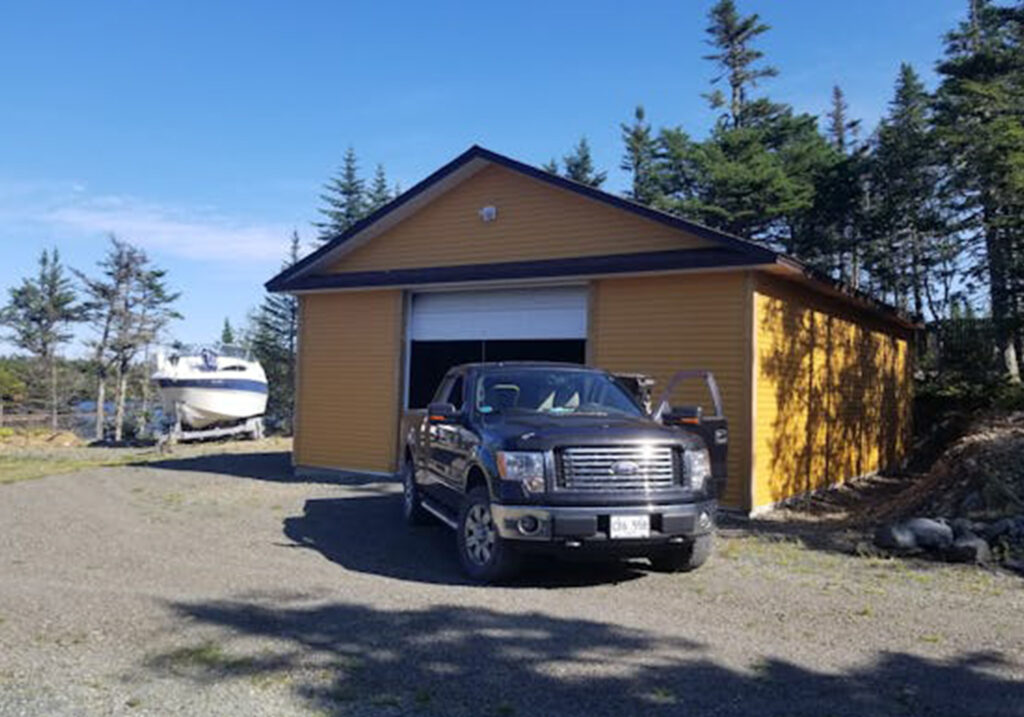Building a metal barn is a significant investment, and understanding the costs involved can help ensure proper budgeting and planning. If you need a barn for agricultural storage, or livestock housing, or a workshop, metal barns offer durability, affordability, and low maintenance compared to traditional wood structures.
Nevertheless, several factors influence the overall cost, including materials, size, customization, site preparation, labor, and permits. By exploring these components, you can make informed decisions and avoid unexpected expenses during construction.
Factors That Influence Metal Barn Costs
The cost of constructing a metal barn depends on multiple factors, including the type of metal used, the size of the barn, and additional features such as insulation, doors, and ventilation. Each of these elements contributes to the total price and must be carefully considered.
Type and Quality of Metal
The type and quality of metal used in construction play a crucial role in determining the cost of a metal barn. Most metal barns are built using either galvanized steel or aluminum, with steel being the more popular choice due to its superior strength and durability. Steel barns can withstand extreme weather conditions, including heavy snow, strong winds, and heavy rainfall, making them a long-term investment. However, steel is also heavier and may be more expensive than aluminum, especially when considering transportation and installation costs. The thickness of the metal, measured in gauge, also affects the price. Thicker steel provides greater durability and resistance to dents and corrosion but comes at a higher cost. Choosing high-quality, rust-resistant materials, such as galvanized or coated steel, can minimize maintenance expenses over time, reducing the need for frequent repairs and replacements.
Aside from the base material, the type of metal treatment and coatings also contribute to cost variations. Metal barns with specialized coatings, such as powder-coated or weather-resistant finishes, offer better protection against rust and corrosion. These coatings extend the lifespan of the structure and reduce maintenance requirements but add to the initial cost. Opting for a barn with pre-coated, rust-resistant panels may seem like a higher upfront expense, but it can save money in the long run by preventing costly repairs caused by rust damage. Investing in high-quality metal ensures the barn remains structurally sound for decades, making it a worthwhile expenditure.
Barn Size and Design Complexity
The size of a metal barn is one of the most significant cost factors, as larger barns require more materials, labor, and foundation work. A simple, small barn with a basic layout will be considerably more affordable than a large, multi-section structure with various functional areas. Farmers, ranchers, and property owners must consider their space needs and budget when determining the appropriate barn size. While a larger barn provides additional storage and workspace, it also increases material and installation costs. Additionally, the size of the barn influences other expenses, such as insulation, ventilation, and lighting, which all contribute to the overall price.
The complexity of the barn’s design also affects the final cost. A straightforward rectangular barn with a single entrance and minimal modifications is the most budget-friendly option. However, adding features such as lofts, partitioned sections, attached storage units, or even living quarters will increase the cost. Custom layouts that require intricate engineering or additional support structures also demand higher labor costs. If future expansion is a possibility, choosing a modular design may be the most cost-effective solution. Modular barns allow property owners to start with a basic structure and add extensions or upgrades later as their needs evolve, reducing initial expenses while keeping expansion options open.
Customization and Features
Customizing a metal barn to fit specific needs adds to the overall cost but can greatly improve functionality and comfort. Essential features such as doors, windows, ventilation systems, and insulation all impact pricing, but they also enhance the usability of the barn. For example, a barn used for livestock will require proper ventilation, insulation, and possibly heating or cooling systems, all of which contribute to higher costs. Electrical wiring and lighting installation also increase expenses, especially if the barn will serve as a workspace, storage facility, or residential unit. These additional features, while costly upfront, can improve efficiency and usability, making them worthwhile investments.
Beyond basic utilities, other customizations such as reinforced flooring, additional storage spaces, skylights, and aesthetic upgrades can drive up the price. Reinforced flooring is particularly useful in barns used for heavy-duty storage or housing large animals, as it ensures structural integrity over time. Skylights and windows provide natural lighting, reducing the need for artificial light during the day and cutting down on electricity costs in the long run. While customization adds to the initial investment, it enhances the barn’s versatility and comfort, ensuring that it meets specific functional needs for years to come.
Site Preparation and Foundation Costs
Before construction begins, the building site must be properly prepared. This process includes clearing debris, leveling the ground, and ensuring proper drainage. In some cases, grading the land may be necessary to prevent water accumulation and foundation damage.
Choosing the Right Foundation
A strong foundation is essential for the stability and longevity of a metal barn. The type of foundation required will depend on the barn’s size and purpose. Common options include:
- Concrete Slab: A durable and long-lasting foundation that provides excellent support, especially for large barns. It is more expensive than other options but offers better protection against moisture and shifting ground.
- Gravel Pad: A more affordable option that provides adequate drainage and support for smaller barns or temporary structures. However, it may not be suitable for heavy equipment storage.
- Piers or Footings: These are used for barns that do not require a full concrete slab but still need structural support. They are often combined with wooden or metal framing for stability.
The cost of the foundation will depend on factors such as soil conditions, local labor rates, and the amount of concrete or gravel required.
Labor Costs and Construction Time
While prefabricated metal barn kits allow for quicker assembly, labor costs still play a role in the total expense. The cost of hiring professional installers will vary depending on location, project complexity, and additional features such as plumbing and electrical work.
DIY vs. Professional Installation
Some property owners choose to assemble metal barns themselves to save on labor costs. While DIY installation can reduce expenses, it requires time, tools, and expertise. If you lack experience in metal building construction, hiring professionals can ensure a properly assembled and structurally sound barn.
Timeline for Construction
The time it takes to build a metal barn depends on factors such as barn size, site preparation, and weather conditions. Prefabricated kits can be installed in a matter of days, while larger custom barns may take weeks to complete. Planning ahead and securing permits early can help avoid construction delays.
Permits and Local Regulations
Before building a metal barn, it is essential to check local zoning laws and building codes. Some areas require permits for agricultural or storage buildings, while others may have restrictions on barn height, size, or proximity to property lines.
Permit Fees and Inspections
The cost of permits varies depending on the location and type of barn being constructed. Some municipalities require inspections to ensure compliance with safety standards, which may add to the overall cost. Failing to obtain the necessary permits can lead to fines, delays, or even the requirement to modify or dismantle the structure.
Long-Term Costs and Maintenance
Although metal barns require less maintenance than wooden structures, ongoing costs should still be factored into the budget. Regular inspections, cleaning, and protective coatings can extend the lifespan of the barn and prevent costly repairs.
Insulation and Energy Efficiency
If the barn will be used for livestock, climate-sensitive storage, or as a workshop, insulation can help maintain stable temperatures and reduce energy costs. Insulating a metal barn requires additional upfront investment, but it can improve energy efficiency and comfort in the long run.
Repairs and Upkeep
Over time, metal barns may develop minor issues such as rust spots, dents, or leaks. Regularly inspecting the structure and performing preventative maintenance can help reduce repair costs. Using high-quality coatings and rust-resistant materials can further extend the barn’s durability.
Conclusion
The cost of building a metal barn depends on multiple factors, including materials, size, customization, labor, site preparation, and permits. By carefully planning and budgeting for these expenses, property owners can ensure a smooth construction process and a durable, long-lasting barn. While the initial investment may vary, the benefits of a metal barn—such as durability, low maintenance, and resistance to weather conditions—make it a cost-effective and reliable choice for agricultural, storage, or workspace needs.

